TOMSK, Sep 22 – RIA Tomsk. Three major projects at once are changing the scientific, educational and economic map of the city - this is the U-NOVUS forum, the Big University of Tomsk and the Priority 2030 federal program of competitiveness. This opinion was expressed by Eduard Galazhinsky, Rector of Tomsk State University, at the meeting with journalists of Tomsk media.
U-NOVUS has been held annually in Tomsk since 2014 with the support of the administration of the Tomsk region. At the forum in 2018, it was decided to change the format and organize workshops, networking and design sessions instead of traditional panel discussions, round tables and reports. In 2020, the forum did not take place due to the coronavirus pandemic. In 2021, U-NOVUS began on July 1 and will run until September 30.
The main topics of the 2021 forum are the connection between science and industry, as well as modern approaches to the construction of university campuses in Russia. Some of the events that have already taken place include round tables on advanced life safety technologies, engineering biology, global climate change and the quality of human life, and others.
- Why was U-NOVUS-2021 focused on these very topics?
- As you know, U-NOVUS has always implied close cooperation between universities and their partners. This year the forum coincided with the beginning of an important contest in Russia - Priority 2030. This is a competition of university development programs, which means that universities have been working intensively on their programs separately for the last year and a half, and also held several strategic sessions to discuss how we can strengthen each other.
© РИА Томск. Павел Стефанский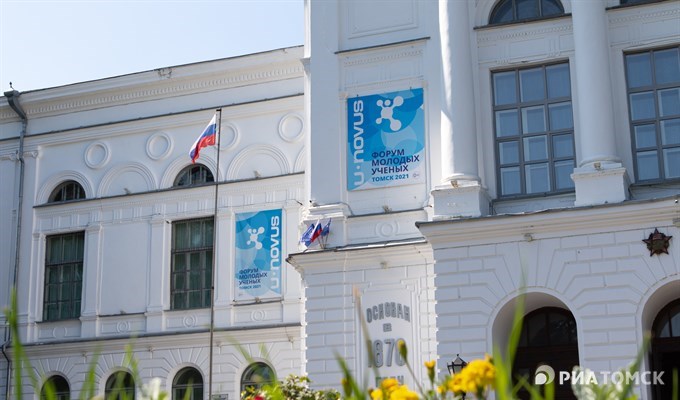
The main topics of the U-NOVUS 2021 forum are the connection between science and industry, as well as modern approaches to the construction university campuses in Russia.
Therefore, at U-NOVUS we, in fact, presented the key big projects and ideas, which are connected with the answers to the big challenges. We formed a common field of meanings and priorities, and it became clear who takes responsibility for what.
For example, TSU takes climate, climate agenda, climate-related technology change, Tomsk Polytechnic University (TPU) - hydrogen and energy, Tomsk State University of Control Systems and Radioelectronics (TUSUR) - microelectronics, new generation communication. And by coordinating all of these things, we formed the U-NOVUS agenda to move forward with our partners in these areas.
If we decided for ourselves that the climate agenda is key for us, then accordingly, within the framework of U-NOVUS we have held several events on this topic, including round tables with the participation of politicians and partners, with whom we have put together an application for a project to create a carbon testing area. After each round table there is an understanding of what the next step should be.
- In your opinion, what are the most important decisions made during U-NOVUS?
- I think the main thing here is the agreement and the decision to open the campus. It is a very important systemic project from the perspective of the territory's development. Another important step is the agreement on the carbon testing area project.
In addition, an agreement on the development of eSports is being prepared. Today we are putting together a consortium of universities that are interested in developing this topic. There is a lot of attention to this story today; we are interested in it in three aspects. Apart from eSports itself as a sport, we are interested in researching the impact of computer games on a person's cognitive abilities, on his psychoemotional state.
© РИА Томск. Павел Стефанский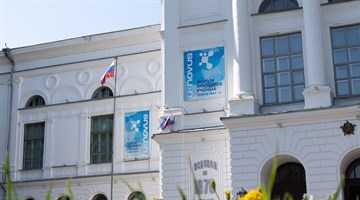
There are all sorts of often opposing views - from "it leads to withdrawal from reality" to "it develops attention, thinking, reaction speed, cognitive abilities". There is evidence that playing for 40 minutes a day dramatically increases a person's ability to hold more objects at attention - a clear development of cognitive ability.
But this is generally scattered data. We want to have our own position, so we are planning a big research program, which we are negotiating with universities.
We also set ourselves and our partners the task of creating and developing games that develop cognitive and personal abilities and lead people to their highest manifestations. How to use traditional gamifying factors to develop a person's potential is a big question.
We held a round table at U-NOVUS, brought together universities that are interested in this. And we have agreed that we will create this infrastructure together. We have an industrial partner: Alexey Lakontsev, the owner of the Coliseum network of large eSports arenas. In general, we agreed that we would work together.
Maybe we will talk about new games in general or the development of existing ones. For now it's just a discussion of ideas and interests which we are formulating for ourselves. It is clear that since young people are playing, our task as a university is to investigate what happens to human nature when they enter this reality, and to learn how to format this reality for human development.
Last week we held the first meeting of university rectors and industrial partners who are interested in this project. In the future, we need to put together research resources, form research teams, address all emerging issues and political contexts, and involve manufacturers. In the next couple of months we will put together some kind of clearer picture.
Our logic is not "eSports for the sake of sports", when for the sake of argument 300 people are engaged professionally and the other 15 thousand are not. For me, for example, it is more important that these 15 thousand are engaged. Athletes also need to be supported, but their zone is an area of high achievement, and we should not forget about the development of the entire system. We need to tighten up the whole system.
- How did universities from other regions show themselves at the U-NOVUS forum in Tomsk?
- Perhaps, the peculiarity of U-NOVUS is that their interest was expressed in large areas. But in principle, the task of the forum is both to attract new universities and to make a triple helix of authorities, business and universities from different regions.
That is why each event always had a balanced composition: different universities, representatives of regional and federal authorities, and business representatives who potentially need this theme or project.
For example: when discussing the climate agenda, we discuss with MegaFon or other companies the creation of sensors that measure emissions, radioactive background, and so on. We discuss with companies the possibilities of artificial intelligence in carbon footprint analysis.
Companies have a practical interest in university research, so the point of U-NOVUS is to structure discussions and debates so that partners (not just industry, but also from scientific institutes) involve us in solving all kinds of problems.
- Through preparations for the forum, through the 5-100 and Priority 2030 projects, TSU has formed a target model for the university's development over the next 10 years. What is key in it?
- It is a big challenge for TSU. We have completed the 5-100 program, we have drawn a lot of conclusions and for the last year and a half we have been actively thinking about the next step. And today we see it that way.
We see the target model of the university for 10 years in four frameworks. We called the first one the "University of Breakthrough". This is an orientation towards frontier interdisciplinary breakthrough directions, which correct the existing economic models.
© РИА Томск. Алена Палехова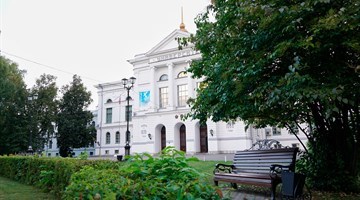
In this logic, we have chosen Engineering or Synthetic Biology, which is essentially the construction of living organisms: bioprinting, the formation of new living sequences of molecules, microelements, DNA strands that allow us to solve breakthrough problems in agriculture, nutrition, medicine.
In the next few decades there will be a shift - humanity will move into a phase of individualized nutrition for the specific needs of each organism. There will be bioreactors that in the future will reproduce food similar to what we eat now, but made for us by the composition of micronutrients. Food designed in a new way. This breakthrough is happening before our eyes. And this is the direction chosen at TSU.
We are going into the logic of "food of the future" with our partners, ArtLife and Efko companies. We are working together on solutions that will shape new approaches. And this area is a problem-setter for all the others: chemistry, biology, law, demography, and communication are all here.
The second framework of the university development model is related to the first one - it is an orientation to metadisciplinary and transdisciplinary research. We understand that all breakthroughs today are at the intersection of realities - physical, digital, biological. How do scientists from different fields learn to work together?
This is the task of a new organizational design, which we call "new socio-humanistic knowledge". We bring together people from different blocks and directions who think about what is happening to humanity in general, and work at the intersections of realities. Creating technologies that advance human nature and enable humans to be effective.
The third framework is ecology, quality of life and sustainable development. In this fluid environment, how do we not harm nature, destroy civilization, destroy society? We are looking at what is happening to nature, the Earth, the climate. We learn to create models that predict these changes, and we learn to live with a changing climate.
The fourth framework is ecosystems. Responding to today's challenges and taking responsibility for them can only be done in collaboration with partners. This is why we have set ourselves the task of bringing together industrial and scientific partners, with whom we can solve global challenges.
This is also a bet on developing an ecosystem, generating knowledge and technology. The university becomes the center of development, attracts partners and creates technologies.
Hence another direction - the formation of a platform of technological sovereignty of the country. We set the task of gathering technologies and testing them, assembling them into a single package that allows the country to be sovereign in this complex turbulent age. One has to have a firm foundation on which the country stands.
© сайт ТГУ
For example, we are planning the Smart Safe Territory project: we want to experiment with technologies such as facial recognition, drones, new energy at the new campus, and it all has to come together in one package, be safe, secure and efficient. It’s a monumental challenge.
- How will this work be structured with other universities within the framework of Priority 2030 and the Big University of Tomsk projects?
- Participants of the Big University held three strategic sessions, where each university presented its development programs. We discussed points of convergence on each block.
For example, if TSU takes the lead in terms of climate, everyone understands that the other universities are coming in with one story of their own in our big one. The same applies to the leadership of other Big University participants: for example, TPU takes the lead in hydrogen topics, and we reinforce it with our own block, such as hydrogen engine design.
In other words, the Big University is a kind of matrix of intersecting projects, where there are coordinated goals - strategic big projects - and for them there is coordinated mutual participation of science and education. We put together our programs for this, we have common postgraduate schools for this, we open up the infrastructure for this.
And this is, in fact, real cooperation.
It is important that not only Tomsk universities are involved in each project. Priority projects involve a consortium of academic institutions and universities from our country and abroad.
© РИА Томск. Павел Стефанский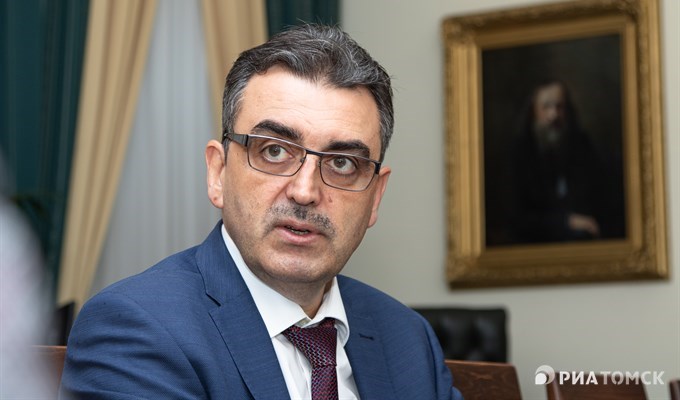
Eduard Galazhinsky: "The Big University is a kind of matrix of intersecting projects, where there are coordinated goals - strategic big projects, and under them - coordinated mutual participation of science and education."
- What difficulties do you see in implementing the Big University project?
- The main stumbling block is the question of how to finance this experiment and common activities. Our principled position is to maintain legal and financial autonomy, we lack instruments that support cooperation quickly and flexibly.
We had the Digital University project, which we won as a university and immediately put cooperation with TUSUR and TPU on the application form. The legislation is such that we ended up having to announce a separate competition (and some obscure organizations came in, almost won that competition, we had to deal with the Federal Antimonopoly Service and so on), despite the fact that we won the competition in which the three of us went straight to it.
Unfortunately, today we are in dire need of tools, and there are none at the country level. Everyone understands this. That is why today we are saying that the federal legislation in this part needs to be changed over the next few years. But we agree that maybe for the time being funding will go according to the principle of "each university a little bit for these activities" or something else.
Mechanisms are being sought, but at the same time we are working on actual practices. When the competitive selection for Priority 2030 is over and there are some budgets for development, we will move on more actively.
- How is the development of infrastructure for the Big University progressing?
- The libraries of Tomsk universities have already been united. They need to switch to another software for convenience, but the universities have already agreed that they will make the switch.
Now the key task is to make a common infrastructure map and access passes for students and faculty, so that they can move around the campus unhindered - from one university's building to another university's building.
In infrastructure, the priority for us is on digital. A competition on digital specialized services is due to take place, it is a continuation of the Digital University story: shared access to timetables, analysis of digital footprints, data accumulation and so on.
I think that in October we will present a roadmap for the synchronization of all projects. There are about 40 working groups within the Big University of Tomsk project.
- One of the important infrastructure topics of the Big University is student dormitory space. According to estimates by the regional Department of Education, the current need for places is seven thousand. By 2025, a deficit of 25,000 places is predicted. The campus will provide 10,000 places. Where will the others be placed?
- We have been assuming and discussing with colleagues that this is the first phase of construction of the campus. There is a potential for expansion up to 20 thousand places. It is understandable that the investor is worried whether the 10 thousand seats will be filled, because we need a lot of money for the construction. We need to understand that this project is the largest in Russia in terms of campus construction.
We are talking not just about dormitories, but about an entire infrastructure - sports, functional centers, companies, offices and so on.
I believe that in the issue of sufficient places for students we need to go in the logic of rental housing. The goal is to increase the popularity of Tomsk - to bring students from abroad and the regions here. And along the way, the rental housing market will grow. A private dormitory? Why not? They exist all over the world.
© РИА Томск. Павел Стефанский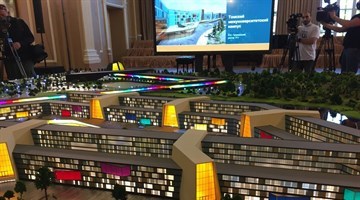
We have calculated that we have 2,500-3,000 students in need at TSU right now. But we have a Soviet legacy in terms of dormitories, and unfortunately, students often live with four people in a room. But the norms are already different: we are building a new dormitory with the expectation that two people should live in a room. If we bring everyone up to the norms, then a rough estimate is about 17 thousand people who need places in dormitories.
This year TSU has increased the number of state-funded places by 800. Of these, 50-70% are for out-of-town students who need dormitory accommodation. In this sense, every year the numbers will grow in the logic of university development. And why should we grow? Not only to have more students and talent, but also to increase the concentration of researchers in our territory.
And then the territory becomes even more interesting for companies, potential investors. They will pull up here, they will be able to both build and rent accommodation. The campus will become a driver of the territory's development.
The territory for the campus is 400 hectares, private land. Now we are discussing that we need a general master plan and, accordingly, a general idea of what type of buildings are needed - low-cost mass housing, high-end housing, what quality of life?
We are designing the campus in the logic of the innovation quarter. And we are counting on the fact that this environment will attract people who are interested and important in terms of innovation and technology.
- What goals do universities set for themselves in terms of attracting new teachers and retaining them at the Big University?
- We assume that we will be able to double the number of teachers, up to 10,000. Now we have 5.5 thousand highly qualified teaching staff.
Where will we find people from? To attract strong leaders with competences that we lack. It should be done with companies, because such specialists, as a rule, are expensive. We need to bring in those who have already worked abroad and have the necessary experience to meet the company's needs.
But the main answer is to "grow" people. That is why today up to 60 percent of university staff are young people under 39. In this respect, I would like to praise the Ministry of Science and Higher Education of the Russian Federation: it has been implementing a program to support the employment of young scientists and researchers for two years now. Last year we welcomed 200 people into the university ecosystem under the program, this year it is 300. The conditions: nine months are paid by the ministry and three months by us.
Earlier it was reported that the Tomsk region's science and education complex is key to the region's social and economic development strategy. One of the first steps in achieving this goal was the creation of the Big University of Tomsk, which will unite six universities and all research institutes of the city while maintaining their legal independence.
It was also reported that in 2021, the Russian Ministry of Science and Higher Education launched a new program for enhancing the competitiveness of universities - Program of Strategic Academic Leadership (PSAL) Priority 2030. At the first stage, 120 universities will be selected to participate. Members of the Tomsk Consortium of Universities and Scientific Organizations have declared their intention to participate in the competition for inclusion in the program.
© предоставлено пресс-службой Томского госуниверситета